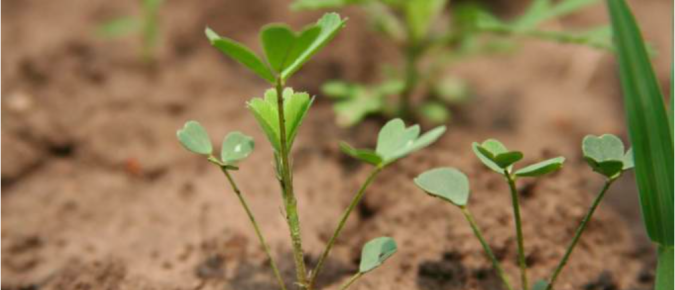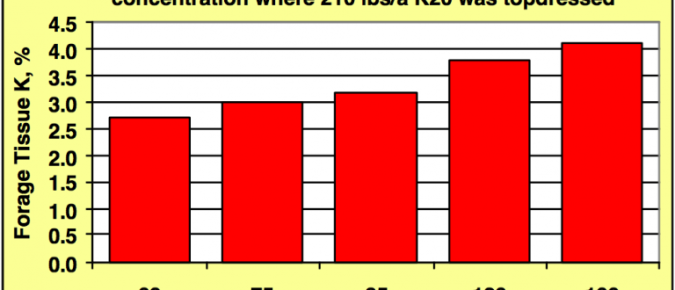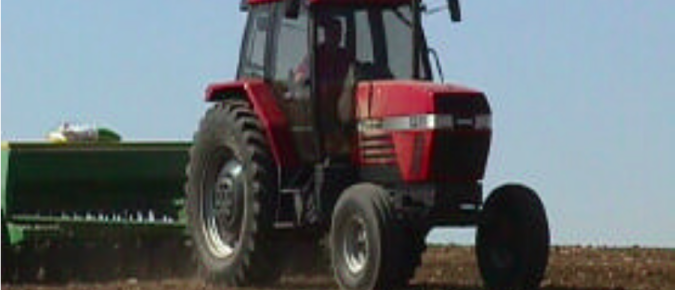In certain instances such as after a failed seeding, winterkill or in an attempt to thicken thinning stands, producers may be interested in following alfalfa with alfalfa. This practice has met with varied success due primarily to compounds produced by older alfalfa plants, which inhibit the growth of young seedlings. This process is known as autotoxicity. In this Focus on Forage, we will discuss what causes autotoxicity, factors that affect it, and ways to reduce the effect.
There is considerable debate about the value of applying calcium to Wisconsin soils used for forage production. Calcium is the dominant exchangeable cation in Wisconsin soils because it is held more tightly by the soil particles than most other cations including magnesium and potassium.
The potassium (K) content of harvested forage has become an increasingly important issue in recent years. As most dairy producers already know, a high level of K in forages has been identified as the causative factor for milk fever in dry and transition cow diets.
Seeding perennial forage species such as alfalfa during the late summer in Wisconsin can result in vigorous and productive stands when proper establishment practices are followed. Late summer alfalfa seeding does not replace traditional spring-seeding recommendations, but rather provides growers with an establishment alternative when crop rotation allows.







